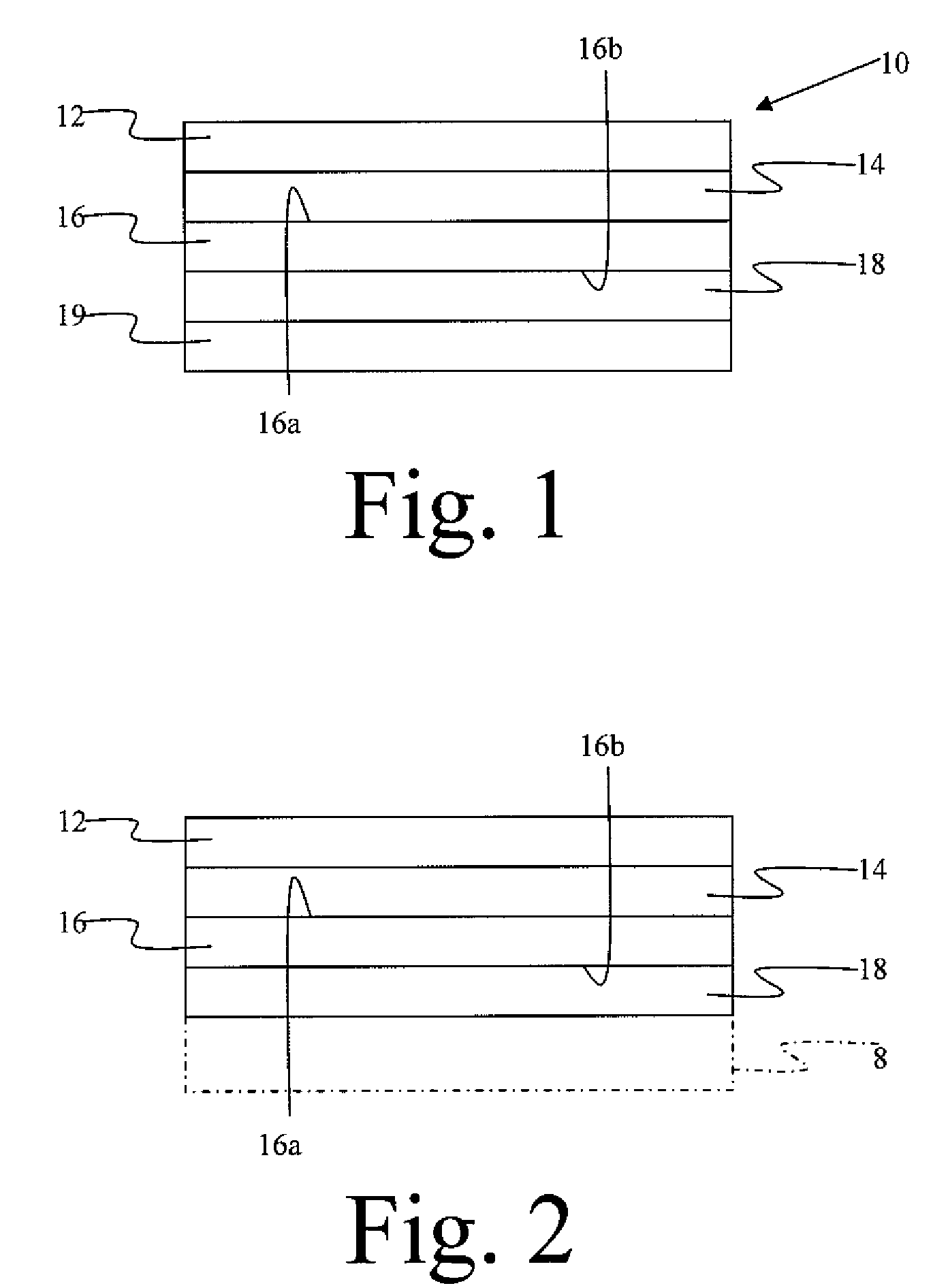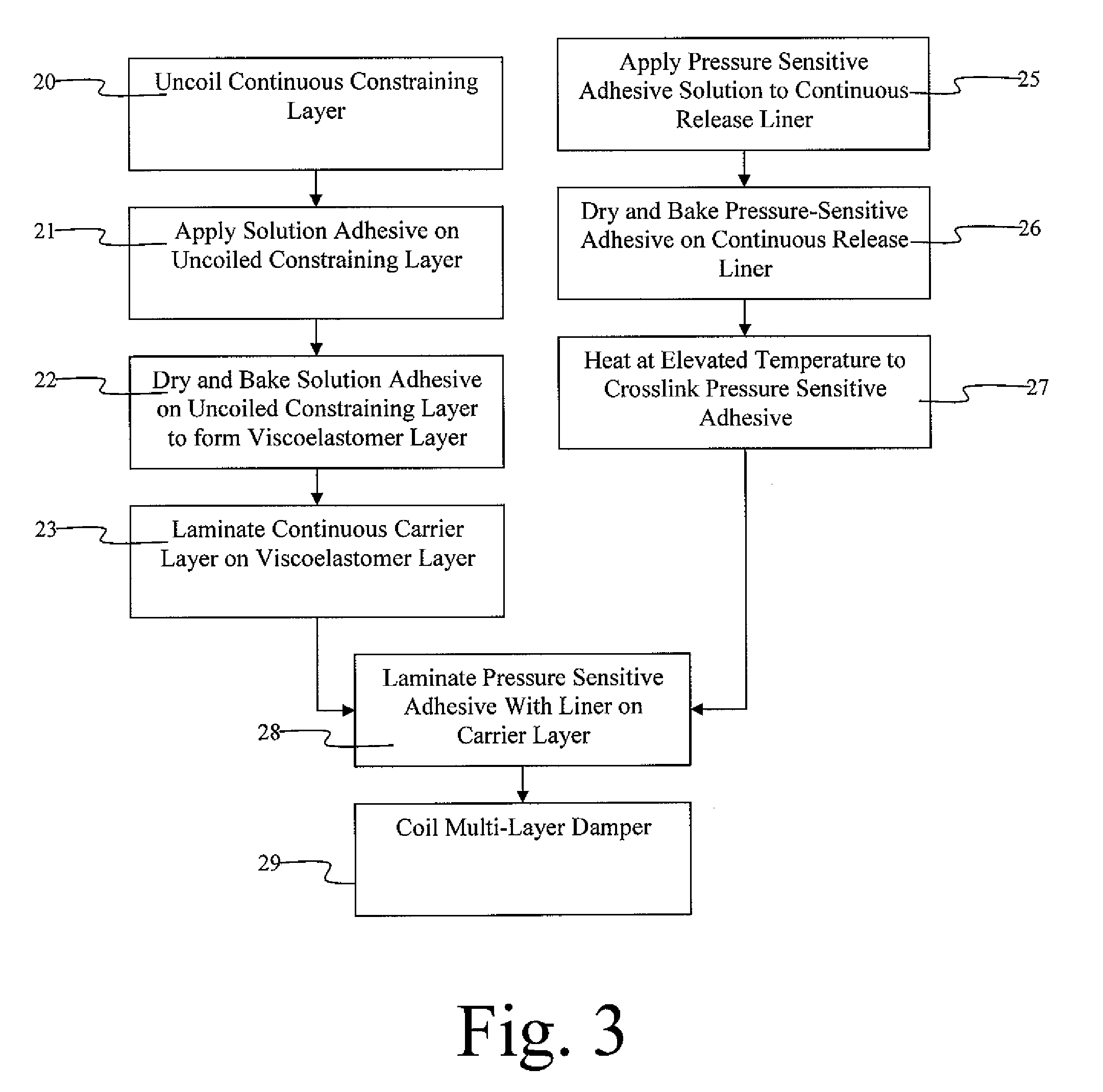Constrained layer damper, and related methods
a damper and constrained technology, applied in the direction of synthetic resin layered products, domestic walls, vehicle components, etc., can solve the problems of affecting the sales and profitability of vehicles, materials that do not possess strong pressure sensitive adhesive characteristics at room temperature, and the difficulty of fixing the constrained layer damper to a substrate such as an automobile part, and may prove difficult or require expensive process equipment and procedures
- Summary
- Abstract
- Description
- Claims
- Application Information
AI Technical Summary
Benefits of technology
Problems solved by technology
Method used
Image
Examples
examples
[0061]The damping loss factor of a constrained layer damper having the multilayer damping material set forth in Table 2 below was determined using the damping test of ASTM E756-04 Standard Test Method for Measuring Vibration-Damping Properties of Materials. For evaluation procedures, the base bar was aluminum having dimensions of 205 mm×40 mm×3.2 mm. Tests were carried out in modes 2, 3, and 4.
[0062]
TABLE 2TestingLayerMaterialDimensionsbase baraluminum205 mm × 40 mm × 3.2 mm(126 mil thickness)con-cold roll steel170 mm × 40 mm × 0.635 mmstraining(25 mil thickness)layervisco-acrylic170 mm × 40 mm × 0.025 mmelastic(1 mil thickness)layercarrier88-92 wt % ferrite powder170 mm × 40 mm × 0.76 mmlayer7-11 wt % polyisobutylene(30 mil thickness)(MW 1.9-2.3 × 106)PSASee Table 1170 mm × 40 mm × 0.051 mm(2 mil thickness)
[0063]The test results are set forth in Table 3 below and illustrated in FIG. 5. The peak damping temperature value for modes 2, 3, and 4 each fell within a range of 50-100° C., ...
PUM
| Property | Measurement | Unit |
|---|---|---|
| peak damping temperature | aaaaa | aaaaa |
| weight percent | aaaaa | aaaaa |
| weight percent | aaaaa | aaaaa |
Abstract
Description
Claims
Application Information
 Login to View More
Login to View More - R&D
- Intellectual Property
- Life Sciences
- Materials
- Tech Scout
- Unparalleled Data Quality
- Higher Quality Content
- 60% Fewer Hallucinations
Browse by: Latest US Patents, China's latest patents, Technical Efficacy Thesaurus, Application Domain, Technology Topic, Popular Technical Reports.
© 2025 PatSnap. All rights reserved.Legal|Privacy policy|Modern Slavery Act Transparency Statement|Sitemap|About US| Contact US: help@patsnap.com



